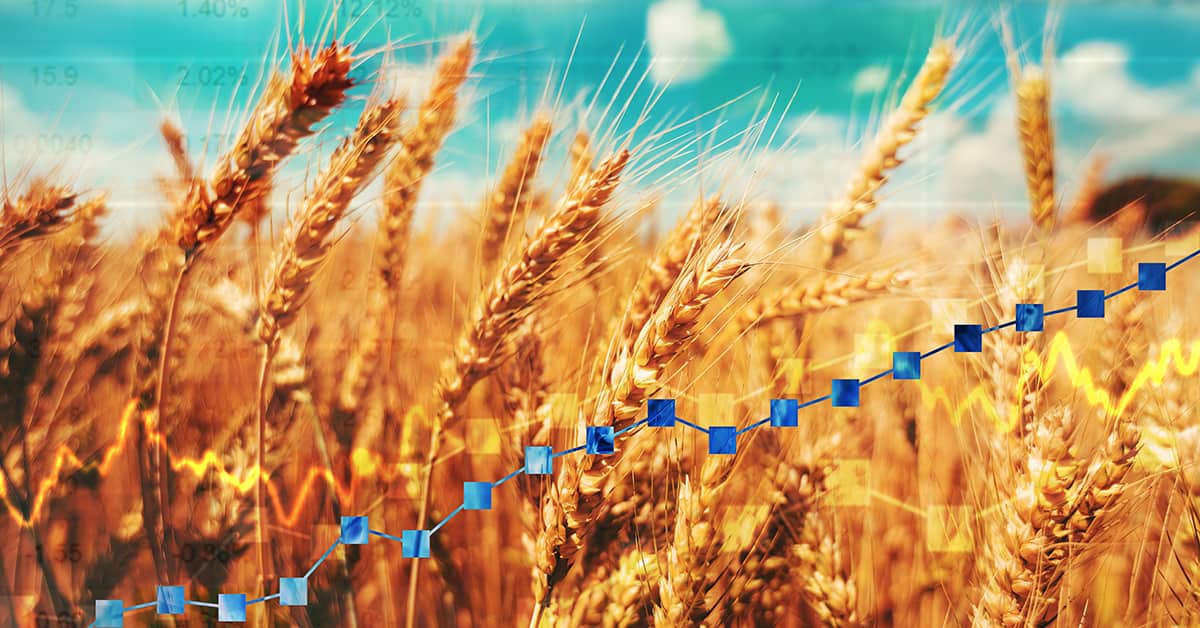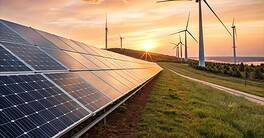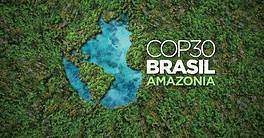War and weather highlight the vulnerability of supplies critical to humanity’s future—especially food staples and the metals for renewable energy.

Human history sometimes shifts abruptly, sometimes subtly. The early 2020s look to be abrupt. Climate change has become an everyday reality, with unprecedented droughts, heat waves and floods that sweep the globe. Russia’s invasion of Ukraine broke nearly 80 years of respect for acknowledged borders, and threatened the vastly expanded trade which that respect enabled. The war constricted shipments of grain and fertilizer long taken for granted, threatening hunger for hundreds of millions of people far from the conflict. Increased rumblings between China and the US over Taiwan raise the specter of an international crisis that could be still worse.
These big shifts have increased anxieties, but also opened opportunities, in an economic sector that is easily ignored in less volatile times: commodities, specifically metals and foodstuffs. The world seems finally united on the urgency of lower-carbon technologies like electric vehicles (EVs) and renewable energy, but has barely acknowledged the vastly larger supply of metals that will be needed. Mining is associated more with destroying the earth than saving it—along with exploiting its work force and ravaging surrounding communities—yet demand for copper, the basis for untold miles of new “green” wiring, will double by 2035, researchers at S&P Global predict. “Unless massive new supply comes online in a timely way,” they warn, “the goal of net-zero emissions will remain out of reach.”
With food, the issue is not change in demand, but supply. Drought in some key growing regions and war impacts—including blockades—in others have thrown global food trade into turmoil. Increasingly erratic rainfall could cut China’s yields on key crops 8% by 2030, the World Resources Institute warns. Global yields could fall 30% by mid-century “without effective adaptation,” the United Nations has found.
Critical Prices Soar
Prices for both metals and grains have climbed in response to these pressures. Lithium, an essential component for EV batteries, costs five times as much as it did a year ago. The price of rice is up by a third over the past year. Copper prices are near highs reached in the early 2010s, when traders and industry were bewitched by talk of a new “commodities supercycle.” Wheat prices have jumped by half over the past two years. And so on. Yet, raw supply is theoretically available. The key green transition metals—copper, lithium, nickel and cobalt—are abundant in the ground. Even for rare earth metals, what’s lacking is processing capacity rather than ore.
The Earth has plenty of capacity to feed all her children, too, properly allied with human technology and capital. Agriculture remains highly inefficient in much of the world, and powerhouse growers like the US or Brazil divert large crop volumes to ethanol and other biofuels.
But farming, like mining, requires years of investment before recouping returns over decades. Metals extraction is an extreme “generational endeavor,” as S&P puts it. An average greenfield mine takes about 10 years from drawing board to first production, half of that time absorbed by getting permits, reckons Julian Kettle, vice chair for metals and mining at consultant Wood MacKenzie. “There is no tight oil in mining,” he says. “No way to develop a strike in two years.”
Agriculture works on shorter cycles. But outlays on land clearance, seeds, fertilizer, machinery and labor still require a correct guess on long-term prices. “There’s no way to print food like the Fed prints money,” says Shawn Hackett, a US-based grain trader and consultant.
Those prices can gyrate dramatically even if the broader trend is upward. The price of wheat jumped by half when Russian troops rolled into Ukraine in late February. Now it’s back to pre-war levels. Grain markets are particularly captive to the vagaries of weather, which, despite challenging long-term trends, can suddenly deliver a bumper year. “Two good crops from two of the major growing areas would ease market conditions considerably,” says Jonathan Haines. senior analyst at consultant Gro Intelligence.
Metals may be indifferent to weather, but not to other market forces. Copper’s price plunged by nearly a quarter this summer as global recession fears gathered. The price of nickel, an EV battery staple, crashed by 30%. The green technologies pushing metals demand remain in their infancy. The two families of EV batteries now battling for supremacy—lithium iron phosphate (LFP) and nickel-manganese-cobalt (NMC)—need very different inputs. Although, each depend on lithium. Both might be superseded by solid state batteries by the time a current mining project yields its first fruits.
“What the battery makers need today may not be what they need tomorrow,” says Andrew Miller, chief operating officer at Florida-based Benchmark Mineral Intelligence. “When people say we need X million tons of lithium, they don’t account for misallocation of capital.”
Mining companies, and their shareholders, were burned by the sector’s last bull run, in the early 2010s, driven by a Chinese infrastructure spree that miners took for a lasting upswing in global consumption. Investment peaked in 2012, just as the prices for copper and other key metals went into a three-year tailspin. Today, stockholders want reliable cash flows and dividends, keeping management ambitions on a tight leash, Kettle observes. “Capex hasn’t really changed on a global level since the low point of 2015,” he says. “If the world commits to the 1.5 degree pathway agreed on at Paris, we can’t deliver the metals.”
Political Currents
The same environmentalism pushing rich-nation consumers toward EVs and solar panels is increasing obstacles to extracting the necessary metals. “In the US, the nexus between a politicized regulatory process and ubiquitous litigation makes an increase in copper output unlikely within the decade,” S&P finds. China can clear such roadblocks more easily. Partly as a result, it dominates metals smelting and processing capacity. But its reserves of copper, nickel and other key commodities are limited.
The two countries that dominate global copper production, Chile and Peru, each electing a leftist president, who campaigned on tighter regulation and higher taxes on mining sectors. President Pedro Castillo’s tenure in Peru has mostly yielded chaos, as his supporters blockade mines in a drive for higher wages and other concessions. Copper output dropped 18% in the first two months of this year, with little relief in sight, Fitch Ratings analysts report that “Peru’s social conflicts, regulatory risks and low business confidence are constraining investments despite increased prices on key metals.”
Chile, under student-firebrand-turned-chief-executive Gabriel Boric, is charting a more measured course. A constitutional convention rejected proposals to nationalize the world’s top copper industry. But Boric’s administration is pressing forward on royalty increases and tighter environmental standards. BHP noted the proposed reforms raised “serious concerns” about a $10 billion investment in Chilean copper under review. “If the proposed royalty plan materializes, we would have to re-evaluate our investment plan in Chile,” a company spokesman told local press.
Then there’s Russia, which aside from its hydrocarbons is the world’s third and seventh largest producer of nickel and copper, respectively. Siberian giant Norilsk Nickel was targeting $35 billion in capital expenditures by 2035, before the Ukraine war started.
But the key country for nickel is Indonesia, which is the top global producer with the largest reserves. President Joko Widodo pushed through laws last year relaxing investment and environmental requirements for miners, aiming for a nickel boom. A coalition of environmental groups petitioned Tesla CEO Elon Musk not to invest in Indonesian nickel, citing deforestation and waste dumping into the ocean. Musk did not respond directly, but Tesla pointedly signed an alternative nickel supply agreement late last year with New Caledonia, a tiny but ore-rich South Seas French territory.
That’s just an early skirmish in a long battle to come over where and how to source commodities of the future, says Alan Young, director of Canadian watchdog Minerals Efficiency Research Group (MERG). “Essential metals may be where you find them, but so is critical habitat,” he says. “You might be able to get away with cheap and dirty mining in the Congo, but not a lot of other places these days.”
At least two large, mineral-rich nations—Canada and Australia—combine stable, balanced regulation with a popular consensus for expanding extraction. “Australia and Canada are two pro-mining islands,” Wood MacKenzie’s Kettle remarks.
Australia in particular seems destined for a lead role in the green transition. It’s the top global producer of lithium production with reserves that lag only Chile’s. It has the second-largest nickel reserves and third-largest copper reserves. Recently elected prime minister Anthony Albanese campaigned on the “once in a generation” chance to build a clean energy vertical from mine to household and beyond. “Australia has an opportunity to be a renewable energy superpower, to drive clean manufacturing and energy exports in our region,” he told the Sydney Energy Forum in July.
Improved recycling could expand supply too. Nearly all the lead for internal combustion batteries is recycled. The production of platinum and palladium, essential to catalytic converters, is following suit. MERG’s Young notes recycling can cut the volume of metals needed to green the planet by a quarter. Lithium-battery producers, whose industry is all but starting from scratch, are thinking ahead regrding circularity. “This is getting a lot of attention because there is a lot of money at stake,” Young says. “We could be leaving billions of dollars in the gutter.”
Already, Sibanye-Stillwater, the world’s largest platinum producer, recycles more metal than it pulls out of the ground, at least at its mine in Montana, according to vice president Heather McDowell. “This process is definitely replicable,” she says, but adds that it’s more costly to extract metal from junked engines than from mines. The company makes it pay by blending the two streams. S&P Global analysts found that the world already recycles 17% of its copper, but the figure can’t rise significantly until a first generation of EVs is built, sold, and ready for scrap.
Improved Cooperation
Miners and the ngos who monitor them are also moving toward cooperation, pushed by end-customers’ rising concern about sustainable supply chains. “There’s been a big change over the last two years in companies who purchase mined materials,” says Aimee Boulanger, executive director of the Seattle-based Initiative for Responsible Mining Assurance (IRMA). “Automakers, jewelers, wind power producers are asking for what campaigners also want: less harm in the extraction process.” IRMA is auditing a dozen mines around the world for their impact on surrounding environment, communities and employees.
Anglo American is their lead corporate partner, voluntarily placing seven facilities under the sustainability microscope, from nickel in Brazil to platinum group metals in Zimbabwe. Boulanger also underlines her work with the two relative giants in lithium extraction, SQM and Albermarle. Water depletion by these companies’ “brine” operations in Chile’s high desert has drawn bad publicity, but jolted the young industry into a search for better ways, she contends. “These smaller companies, who are trying to do what’s never been done before, recognize the urgency of the moment,” Boulanger says.
Agriculture is as decentralized as mining is centralized. That makes increasing food production both harder and easier. It’s harder because no board of directors can mobilize finance and yield-enhancing technology for the world’s approximately 500 million family farms. It’s easier because progress can come in small steps, by trial-and-error, without multi-billion dollar outlays.
Hardier, genetically modified seeds and other innovations keep production increases steady, Gro Intelligence’s Haines says. Global wheat harvests have increased by 12% over the past decade, rice by 8%—roughly in line with the 9% global population growth.
Weather and war both threaten this hard-won equilibrium, the hazards magnified by the high concentrations that have evolved in a (more or less) free-trading world. Russia and Ukraine, as we are all now keenly aware, account for about 30% of global wheat exports. The top three rice exporters—India, Vietnam and Thailand—take up two-thirds of the market. Localization efforts are unlikely to get far, according to Haines. “Using more landmass to produce less crop, that’s not something we’ve seen yet,” he says.
One way or another, business, investors and the general public will take non-oil commodities a lot less for granted going forward. Food production and costs may swing substantially for reasons beyond our (short-term) control. Producing the metals we need is more of a social choice, but one the world shows little sign of facing. “Society needs to decide which poison it wants, and get comfortable with more mines,” Wood MacKenzie’s Kettle says. “Right now society is hypocritical.”
The world will likely adapt, as it has before, but not easily. “This will not be a very smooth transition,” says Miller Benchmark Intelligence’s Miller. “It’s going to be a very rocky and bumpy ride for the next decade.”



